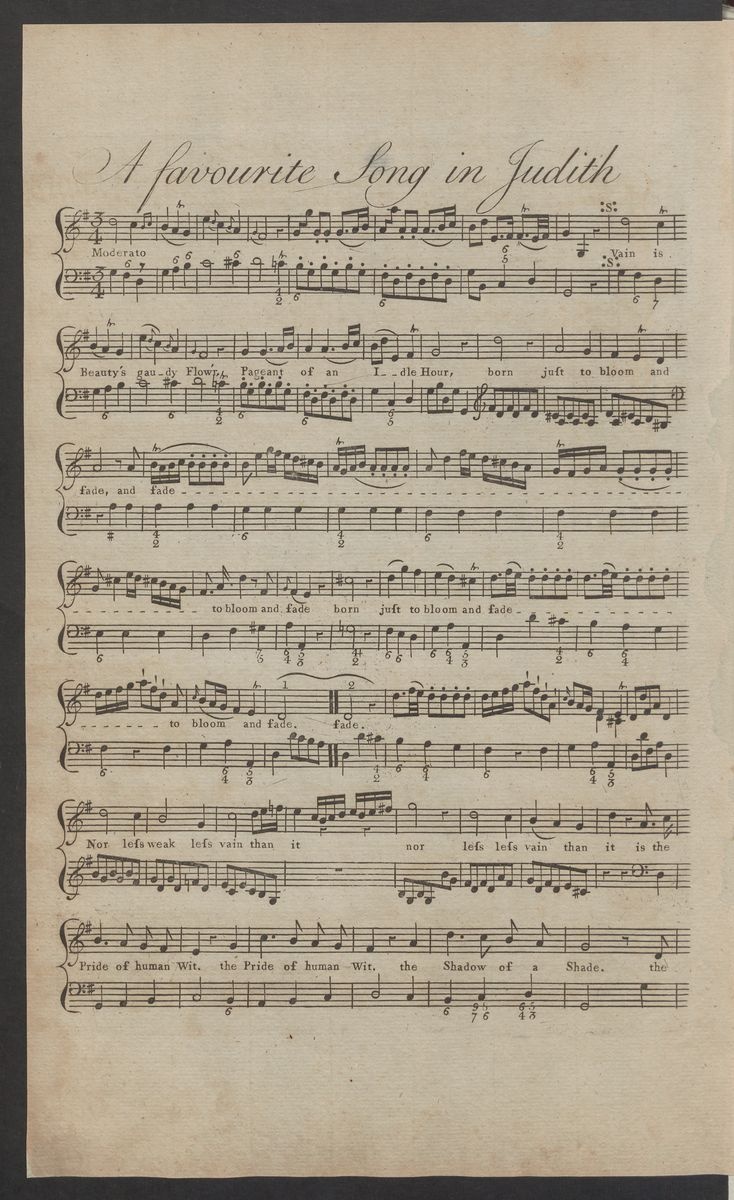Arne, Thomas Augustine: A favourite song in Judith : sung by Miss Brent / set by Dr. Arne [Text: Isaac Bickerstaffe]. - [London], [ca. 1761]. - [2] Bl. -
Text-Incipit: Vain is beauty’s gaudy flow’r. -
Thomas Arne komponierte das Oratorium "Judith", basierend auf dem biblischen Buch Judith, im Jahr 1744. Das Notenblatt enthält die Sologesangsstimme mit Cembalobegleitung und beziffertem Generalbass zu einem einzelnen Song aus diesem Oratorium. Es ist überliefert im sog. "Pleasure-Gardens-Konvolut", einer Sammlung von überwiegend gedruckten Notenblättern, wie sie in den Londoner Vergnügungsparks in der Mitte des 18. Jahrhunderts verwendet wurden. Bei der genannten Sängerin handelt es sich um Charlotte Brent, die häufig in Arnes Werken auftrat.
en









